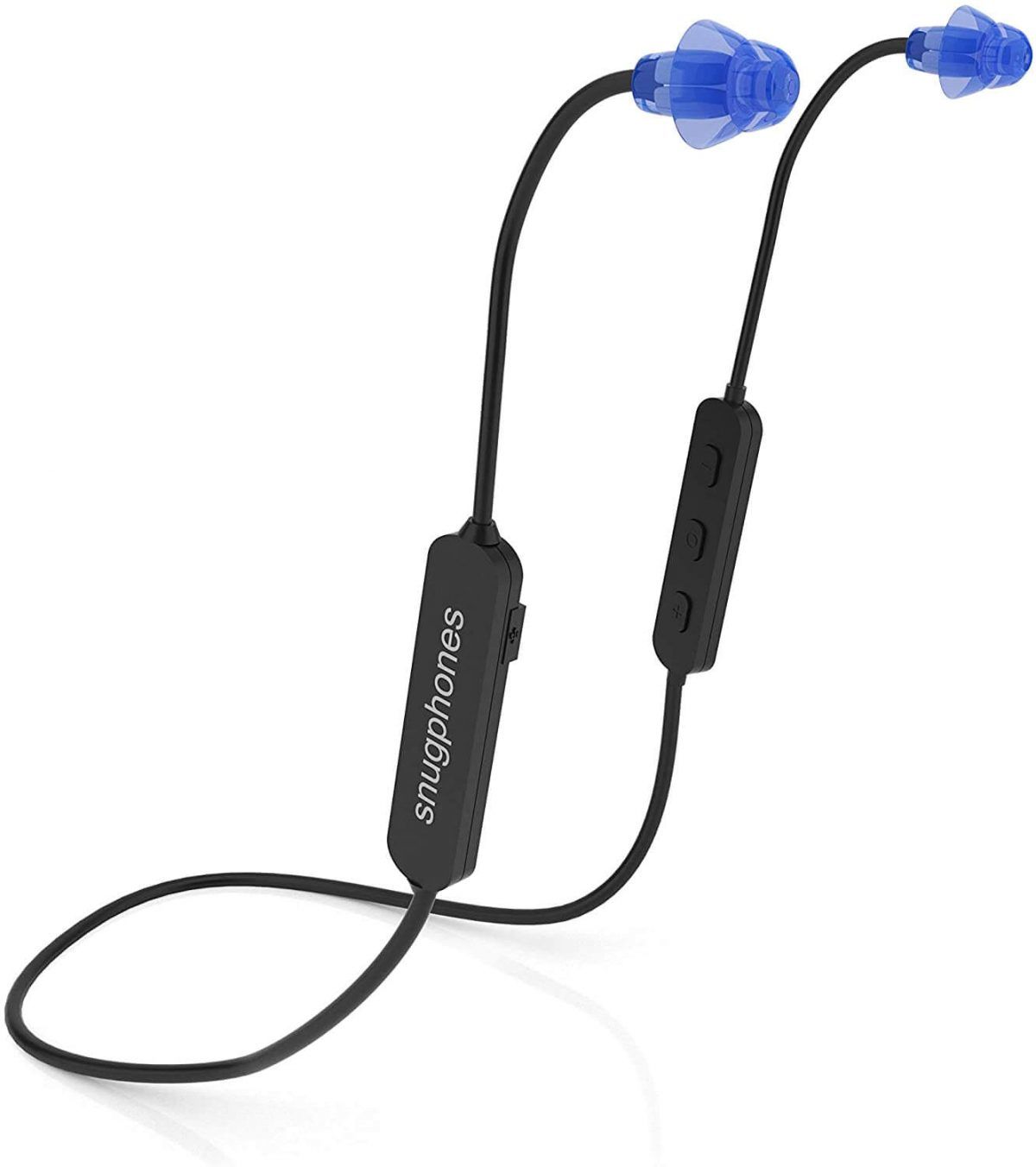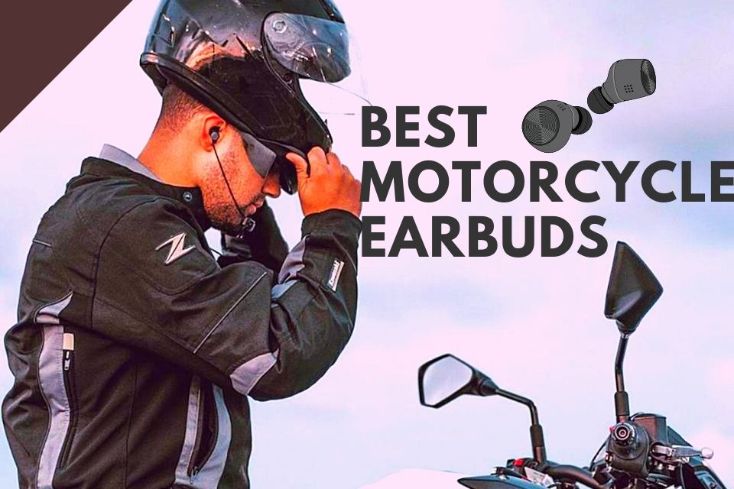Understanding the Needs of Bikers: Crucial Factors to Consider
When selecting the best headphones for bikers, it is essential to focus on several key factors to ensure an enjoyable and secure biking experience. Safety, comfort, sound quality, and weather resistance are all critical aspects to consider. By addressing these factors, bikers can enhance their riding experience without compromising their safety or comfort.
First and foremost, safety should be the top priority when choosing headphones for biking. Opt for models that allow users to stay aware of their surroundings, ideally with features like ambient sound modes or volume limits. This ensures that bikers can hear traffic, pedestrians, and other potential hazards while still enjoying their music.
Comfort is another crucial factor, as ill-fitting headphones can lead to distractions and discomfort during long rides. Look for headphones that offer a secure fit, such as earbuds with stability fins or over-ear designs with adjustable headbands. Additionally, consider factors like weight, padding, and breathability to ensure a comfortable biking experience.
Sound quality is also an important consideration, as high-quality audio can significantly enhance the biking experience. Look for headphones that deliver clear, balanced sound with minimal distortion, even at lower volumes. Noise-cancelling technology can be beneficial in certain situations, but it is essential to ensure that it does not compromise safety by blocking out essential ambient sounds.
Lastly, weather resistance is a valuable feature for bikers, as it ensures that headphones can withstand various weather conditions. Waterproof or water-resistant headphones can protect against rain, sweat, and accidental splashes, ensuring that they continue to function properly even in adverse conditions.
Wired vs. Wireless Headphones: Pros and Cons for Bikers
When selecting the best headphones for bikers, one of the primary decisions is between wired and wireless models. Each type has its advantages and disadvantages, and the most suitable option depends on individual preferences and biking scenarios.
Wired Headphones
Wired headphones offer several benefits for bikers. They are typically more affordable, with a wide range of options available at various price points. Additionally, wired headphones do not require charging, ensuring uninterrupted music during rides. However, wired headphones can be cumbersome, with cords potentially getting tangled or caught on objects, which may pose safety risks for bikers.
Wireless Headphones
Wireless headphones provide bikers with greater freedom of movement, as they are not tethered to a device. This can be particularly beneficial during high-intensity rides or off-road biking. Furthermore, wireless headphones often come with advanced features like noise cancellation, voice assistant compatibility, and customizable sound profiles. However, wireless headphones rely on battery power, which may require regular charging and could lead to interruptions during long rides if not managed properly.
Ultimately, the choice between wired and wireless headphones for bikers depends on personal preferences and specific biking scenarios. Bikers who prioritize affordability and simplicity may prefer wired headphones, while those seeking advanced features and greater mobility might opt for wireless models. Regardless of the choice, it is essential to prioritize safety, comfort, and sound quality when selecting the best headphones for biking.
Top Headphones for Bikers: A Handpicked Selection
To help bikers make an informed decision, we have curated a list of the best headphones for bikers, including the Jabra Elite Active 75t, Plantronics BackBeat FIT 6100, and Bose SoundSport Wireless. Each of these models offers unique features that make them ideal for biking.
Jabra Elite Active 75t
The Jabra Elite Active 75t earbuds are designed for active lifestyles, featuring a secure fit, water resistance, and customizable sound profiles. With up to 24 hours of battery life (including charging case), these earbuds ensure uninterrupted music during long rides. Additionally, the Jabra Elite Active 75t offers advanced noise-cancellation technology and a built-in microphone for taking calls, making them a versatile choice for bikers.
Plantronics BackBeat FIT 6100
The Plantronics BackBeat FIT 6100 are wireless over-ear headphones specifically designed for sports and fitness enthusiasts. They offer a comfortable, secure fit, even during high-intensity rides. With up to 24 hours of battery life, these headphones ensure long-lasting music enjoyment. Furthermore, the BackBeat FIT 6100 features on-ear controls, voice assistant compatibility, and customizable EQ settings, enhancing the overall biking experience.
Bose SoundSport Wireless
The Bose SoundSport Wireless earbuds are known for their exceptional sound quality and secure fit. With up to six hours of battery life, these earbuds provide ample power for biking excursions. The SoundSport Wireless earbuds are also sweat and weather resistant, ensuring durability and reliability during various biking conditions. Moreover, these earbuds feature a built-in microphone and on-ear controls for added convenience.
How to Choose the Perfect Headphones for Biking: A Step-by-Step Guide
Selecting the best headphones for biking involves careful consideration of various factors. By following this step-by-step guide, readers can make an informed decision based on their preferences and needs.
Step 1: Define Your Budget
Determine how much you are willing to spend on headphones for biking. Keep in mind that higher-priced models often offer more advanced features and better sound quality, but there are also budget-friendly options that provide excellent value for money.
Step 2: Choose Your Preferred Fit
Decide between in-ear, on-ear, or over-ear headphones. In-ear headphones are generally more compact and secure, while on-ear and over-ear headphones may offer better sound isolation and comfort. Consider the type of biking you will be doing and how each fit might impact your experience.
Step 3: Identify Desired Features
Make a list of features that are important to you, such as noise cancellation, water resistance, built-in microphones, and voice assistant compatibility. Prioritize these features based on your needs and preferences.
Step 4: Compare Options
Research different headphones for bikers, keeping your budget, preferred fit, and desired features in mind. Utilize resources like this comprehensive guide to narrow down your options and find the best headphones for your biking needs.
Step 5: Read Reviews
Before making a final decision, read reviews from other bikers who have used the headphones you are considering. This can provide valuable insights into the headphones’ performance, durability, and overall user experience.
Beyond Sound: Additional Features to Look for in Biker-Friendly Headphones
While sound quality is crucial when selecting the best headphones for bikers, additional features can significantly enhance the overall biking experience. Here are some features to consider when searching for the perfect headphones for your biking needs:
Built-in Microphones
Headphones with built-in microphones allow bikers to take calls without having to remove their headphones or interrupt their music. This feature can be particularly useful during long rides or when commuting to work.
Voice Assistant Compatibility
Voice assistant compatibility enables bikers to control their music, navigation, and other functions using voice commands. This hands-free control allows bikers to maintain focus on the road while still enjoying their headphones’ features.
Earbud Stability
For high-intensity rides or off-road biking, earbud stability is essential. Look for headphones with ear tips or wings that provide a secure fit, ensuring they stay in place during vigorous movement. Some models even offer customizable ear tips for a more personalized fit.
Customizable Sound Profiles
Some headphones allow users to create customized sound profiles, adjusting the bass, treble, and other sound settings to their preferences. This feature can be particularly beneficial for bikers who enjoy listening to music while biking, as it enables them to tailor the sound to their specific environment.
Multipoint Pairing
Multipoint pairing enables headphones to connect to multiple devices simultaneously. This feature can be useful for bikers who want to listen to music from their smartphone while still being able to receive notifications or calls from their smartwatch or tablet.
Battery Life and Charging Solutions: Ensuring Uninterrupted Music on the Go
For wireless headphones, battery life is a critical factor for bikers. Long-lasting batteries ensure uninterrupted music during rides, while charging solutions like portable chargers and quick-charge technology provide added convenience. Here’s what bikers should consider when evaluating battery life and charging options for their headphones:
Battery Life
Choose headphones with a battery life that meets your biking needs. For long rides or frequent use, look for models that offer 8 hours or more of playtime per charge. Keep in mind that some headphones may have shorter battery life when features like noise cancellation are enabled.
Charging Solutions
Portable chargers and power banks can be lifesavers for bikers, providing an emergency power source when headphones run out of battery during a ride. Look for headphones that are compatible with portable chargers and ensure the charger has enough capacity to recharge your headphones fully.
Quick-Charge Technology
Quick-charge technology allows headphones to recharge rapidly, providing a partial charge in a short amount of time. This feature can be particularly useful for bikers who need to recharge their headphones quickly before setting out on a ride.
Battery Conservation Tips
To maximize battery life, consider turning off noise cancellation or other power-intensive features when not in use. Additionally, keep headphones in a cool, dry place when not in use, as extreme temperatures can negatively impact battery performance.
Maintaining and Caring for Your Biker-Friendly Headphones
Proper maintenance and care can significantly extend the lifespan of headphones designed for bikers. By following these tips, bikers can ensure their headphones remain in excellent condition and continue to deliver high-quality sound and functionality:
Cleaning
Regularly clean your headphones to remove dirt, sweat, and earwax buildup. Use a soft, dry cloth to gently wipe down the earbuds, headband, and any other exterior surfaces. For more thorough cleaning, use a mild soap and water solution, ensuring all components are completely dry before use.
Storage
Store headphones in a protective case or pouch when not in use. This helps prevent damage from drops, impacts, and other potential hazards. Additionally, avoid wrapping the earbud or headphone cables around the device, as this can cause long-term damage and reduce their lifespan.
Handling
Handle headphones with care, avoiding excessive force or twisting motions that can damage the internal components. When connecting or disconnecting the headphones, grip the plug or connector, not the cable, to minimize wear and tear.
Battery Care
For wireless headphones, follow the manufacturer’s guidelines for battery care to ensure optimal performance. This may include avoiding fully depleting the battery before recharging and storing the headphones with a partial charge when not in use.
Staying Safe While Enjoying Music on the Road: Tips and Tricks
Biking with headphones can be an enjoyable experience, but safety should always be the top priority. By following these tips and tricks, bikers can stay aware of their surroundings while still enjoying their music:
Ambient Sound Modes
Choose headphones with ambient sound modes, which allow external sounds to mix with your music. This feature helps bikers stay aware of traffic, pedestrians, and other potential hazards while still enjoying their tunes.
Volume Limits
Set a volume limit on your headphones to prevent excessive noise exposure. This not only promotes safe listening practices but also allows bikers to hear important sounds in their environment.
Single-Ear Listening
Consider listening to music with only one earbud, especially in busy or unfamiliar areas. This approach enables bikers to maintain full awareness of their surroundings while still enjoying their music.
Regular Breaks
Take regular breaks from listening to music while biking, especially in high-traffic areas or when navigating complex routes. This practice ensures that bikers remain fully alert and focused on their surroundings.
Safe Biking Practices
Always follow safe biking practices, such as wearing a helmet, using hand signals, and obeying traffic laws. By combining safe biking habits with responsible headphone use, bikers can create a secure and enjoyable riding experience.








